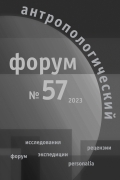Interaction between Jewish Correspondents and the Editor of the Anti-Religious Newspaper Bezbozhnik: Positioning of Participants in Relation to Jewish Collective Meanings
DOI:
https://doi.org/10.31250/1815-8870-2023-19-57-86-107Keywords:
positioning theory, conversation analysis, epistemic status, Jewish narratives, rabselkor movement, Bezbozhnik newspaperAbstract
This article examines the interaction between Jewish correspondents and the editors of the anti-religious newspaper Bezbozhnik. The correspondent’s letter is treated as a turn at talk designed and produced so as to be recognized by interlocutor. In this turn at talk, the correspondent takes a certain epistemic position and simultaneously ascribes an epistemic position to the interlocutor in relation to the narratives. Narratives are treated as elements of the social context from which the interlocutors take the intents for their actions. The task of the study is to understand how a unit act and a narrative are coupled in interaction; that is, how Jewish correspondents position themselves and the editors in relation to Jewish narratives. The article aims to reveal the mechanics of this positioning and to identify positioning markers that the correspondent placed in their turn at talk for the interlocutor. For this purpose, the author uses the principles of conversational analysis and the positioning theory developed by Rom Harre. Three letters with traditional Jewish themes are drawn on as examples. They are dedicated to the celebration of the boy’s coming-of-age (bar mitzvah), the synagogue as a meeting place for the community, and what a real Jew should be like.

